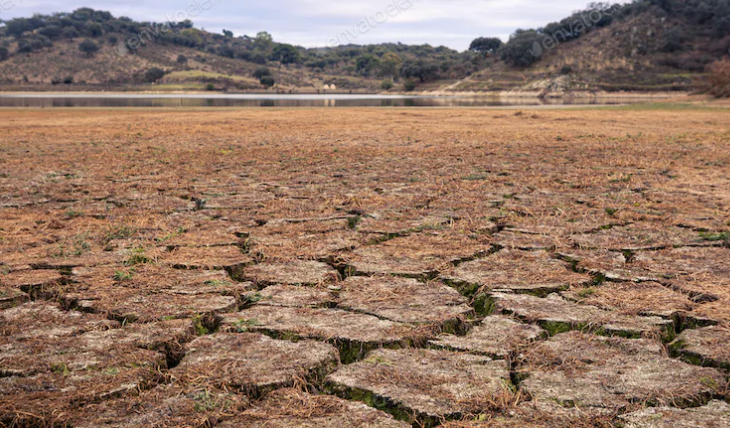The Climate Crisis: A Human Rights Issue.
When we talk about climate change, it often provokes conversation about the future and what it will look like. There’s talk of models and clocks and predictions. Much of the focus is on how much we really need to care and how much change we need to make. How many toxins can we pump into the atmosphere before too many people die? How much can the earth warm before there’s no food left? What is the maximum amount of damage we can do before things get too bad? So much is put into deciding to what extent we need to prioritize the environment. However it is remiss to discuss the climate crisis without addressing the fact that it is a human rights issue.
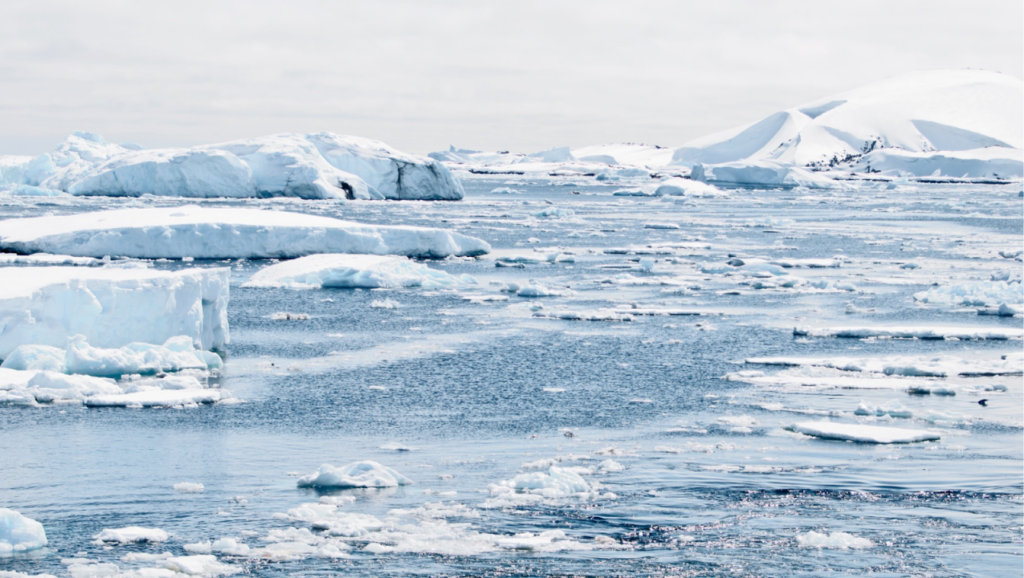
Every aspect of our lives is affected by global climate and the environment. The air we breathe, food and water supplies, weather, global conflict, disease and famine patterns, and even the economy. The combustion and release of greenhouse gasses is causing a global climate crisis. Overpopulation and socioeconomic inequity on a global scale are allowing this crisis the potential to affect billions, but not all in the same way. Environmental inequality exists everywhere, and the gap of how people are affected will grow as the effects of climate change intensify.
The climate crisis is a human rights issue. This is not an arguable fact, and it is one that is so often overlooked in the discussion of climate change. People seem to be so focused on how expensive climate change will be and how much solutions will cost, that they forget human lives are at stake. Especially the lives of those marginalized and impoverished. The reality is, if we as humans don’t make changes, things will not get better. In fact, they will get exponentially worse. It becomes easier for people to not care about things when they believe it won’t affect them. As it so works in many other situations, when bad things happen, those who are marginalized suffer the most. However, the climate crisis is not a situation that will allow anyone to get off scathe free.
As weather events become more extreme and extreme weather events become more common, people will die. It’s estimated that extreme temperatures kill millions of people globally every year, those without adequate housing who suffer through excessively hot summers and freezing winters are especially in danger. The warming temperatures, unexpected winter storms and blazing heat waves will likely only intensify these occurrences. Hurricanes and tropical storms are also growing in intensity and occurrence, leaving paths of destruction and thousands of lost lives every year. Things don’t always get better after the storm passes though. After Hurricane Dorian in 2017 and Hurricane Irma in 2019, St. Martin struggled with where and how to rebuild. Politicians pushed to not rebuild in areas that they deemed too much of a risk of being destroyed again, mostly including areas of low income. Marginalized people suffered from the storms and their aftermath in ways privileged people were not. As extreme weather events become more common and infrastructure is rebuilt time and time again, deciding how to protect those who will suffer the most needs to be prioritized.
As the oceans warm and ice caps melt, sea levels will rise. According to the NOAA 2022 Sea Level Rise Technical Report, the coastline is projected to rise 10-12 inches in the next 30 years; the amount it rose in the last 100 years. This number varies depending on the region, as the height of the land and sea level changes according to geography. An important part of this is the consequential increase in coastal flooding. As sea level is higher, tides and storm surges will be as well. “Moderate” flooding is expected to occur on average, more than 10 times as often as today. Even scarier, if we don’t take action against the amount of emissions produced, we could see anywhere from 3.5-7 feet of sea level rise by 2100. I live on the North Carolina coast and have made a model of sea level change using GIS (Geographic Information Systems.) In this image you can see the land that will be submerged under 1 foot of water, then under 3 and 6 feet as it could be under the circumstances of a storm surge.
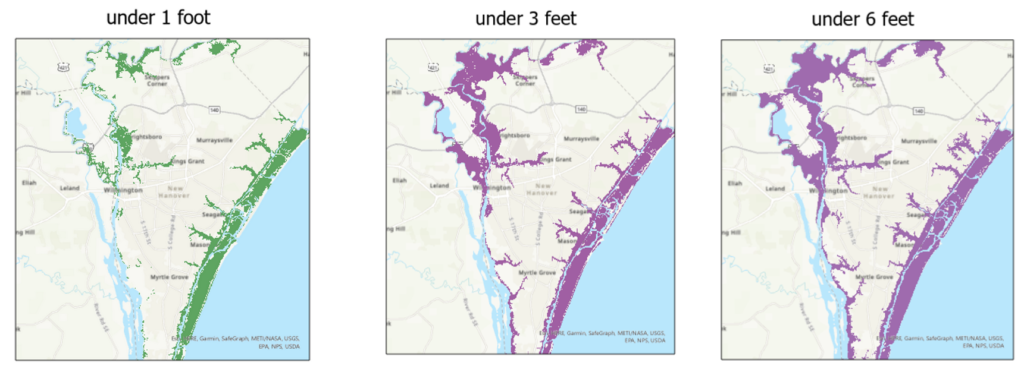
The preparation for rising sea levels that are to come from warming temperatures and melting sea caps has already begun. To continue habiting the coastlines so many know and love and rely on, new infrastructure must be put into place. Sea walls and drainage projects are becoming a priority in coastal areas to protect infrastructure that already exists. Even then, countless people will lose their homes to flooding. The #1 cause of death in hurricanes is drowning, and the immense flooding and storm surges they bring will undoubtedly be even more catastrophic.
The global food crisis is one of the most pressing human rights issues in the world right now. Over 800 million people face food insecurity issues. Over 50 million are close to starvation. Food insecurity can occur for a multitude of reasons. Poverty, economic shock and conflict are some of the most prevalent. Environmental factors such as flooding and droughts also have a huge effect on food supplies and costs. Other environmental concerns such as lack of land and topsoil are also putting pressure on the global food markets. As the human population increases, the question of how we will feed everyone is looming over the heads of even the most wealthy countries. Unpredictable temperatures and weather events are only going to intensify the problem that is global food insecurity, and those already affected by food insecurity will undoubtedly suffer the most.
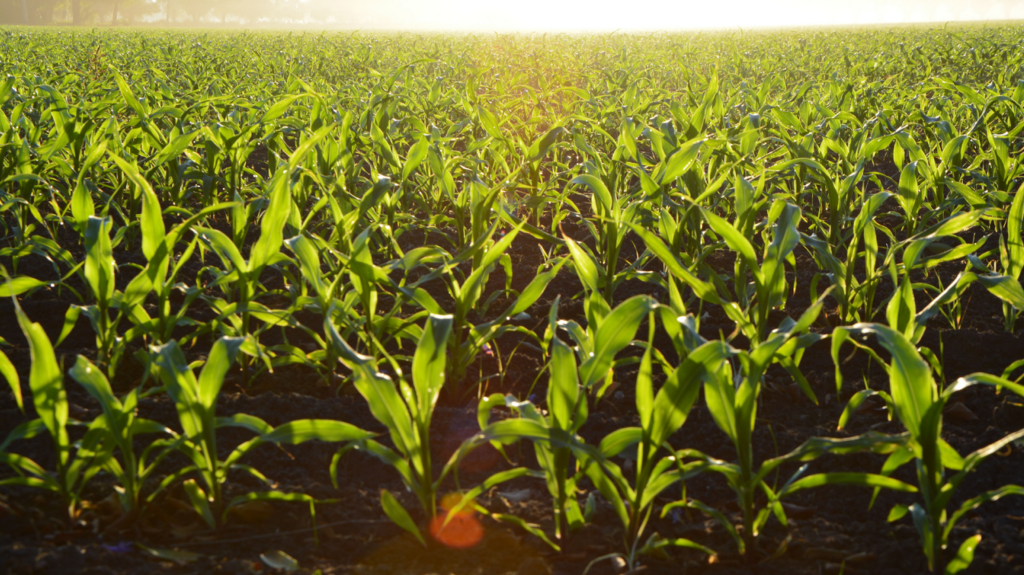
In the scientific community, water is rumored to be the next most valuable resource. This is an extremely scary fact. Freshwater sources have been depleted by humans in an unsustainable manner for too long, and reservoirs all over the world are drying up. As weather patterns have become unpredictable, the reservoirs aren’t able to recharge in the ways they used to, and especially not in a way that could keep up with the rate they are drained. Rising sea levels are causing freshwater supplies to be contaminated with saltwater, and undrinkable. Freshwater shortages will affect everything from agriculture to energy production to manufacturing processes globally. It will affect people’s access to safe, clean drinking water. When natural disasters strike they can destroy or contaminate water supplies, and the rising temperatures can lead to the growth of deadly water-borne pathogens. In places of the world that don’t have access to reliable clean, or even bottled water, this will be a huge problem. UNICEF predicts that by 2040, 1 in 4 children will live in areas of extremely high water stress. Governments are already preparing for these facts to start conflict, and some believe there could be wars over water in the future.
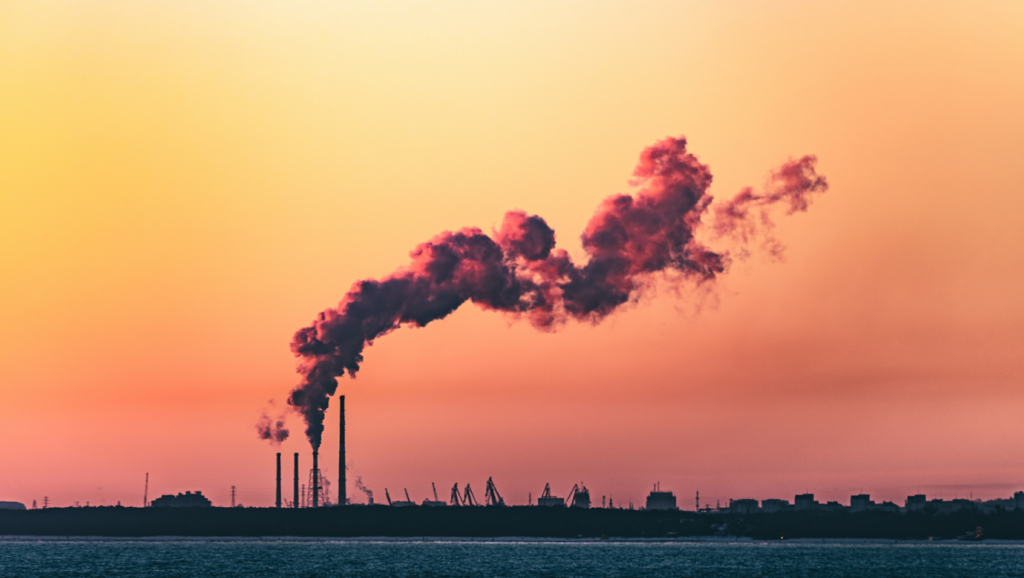
Climate change will decrease air quality. Warmer temperatures can lead to longer allergy seasons and increase the amount of ozone in lower atmospheric levels. Allergens in the air can be harmful to those with asthma. Ozone is incredibly important in the stratosphere, but ground-level ozone can cause diminished lung function. In addition, the increase in wildfires associated with climate change is also bad news because the particulate matter put into the air by fires can be incredibly dangerous. While poor air quality is bad news for everyone, some are impacted more than others. Air pollution disproportionately affects people of color. The NAACP reported that people of color are at least 75% more likely to live in communities that border oil and gas refineries compared to other Americans. They also found that black Americans breathe air that’s 40% more polluted than white Americans, another example of environmental inequality.
As the previously mentioned impending conflict and sea level rise comes to hold, there is expectation that there will be a mass migration as a result of the climate crisis. Those living in areas that can’t afford to adapt to the rising sea levels will have to leave and move inward. Those who once had access to water but no longer have the ability to grow crops or drink safely, may try to move. The big question is, where are they going to go? Immigration and emigration have sparked political debate for centuries, and there’s no doubt it will occur again. Housing, feeding and supporting people who have had to flee their homes in search of a safe environment will likely be a huge political and moral topic in the coming century.
Everyone deserves the right to a safe, clean environment. The fight to keep earth a place capable and worth habitating is far from over. We should all care about this because it will affect us all. Environmental changes will happen, but the severity is yet to be determined, and how equally people are affected by it can still be improved. The flight to implement green energy and more sustainable practices is not just about money and policy, it’s about human rights.
Sources
2022 sea level rise technical report. NOAA’s National Ocean Service. (2022, February 15). Retrieved July 6, 2022, from https://oceanservice.noaa.gov/hazards/sealevelrise/sealevelrise-tech-report.html
Earthday.org. (2019, December 17). Climate change is a human rights issue. Earth Day. Retrieved July 6, 2022, from https://www.earthday.org/climate-change-is-a-human-rights-issue/#:~:text=Climate%20change%20isn’t%20simply,we%20indirectly%20violate%20human%20rights.
A Global Food Crisis: World Food Programme. UN World Food Programme. (2022). Retrieved July 6, 2022, from https://www.wfp.org/hunger-catastrophe#:~:text=2022%3A%20a%20year%20of%20unprecedented,on%20the%20edge%20of%20famine.
Guardian News and Media. (2021, July 7). Extreme temperatures kill 5 million people a year with heat-related deaths rising, study finds. The Guardian. Retrieved July 6, 2022, from https://www.theguardian.com/world/2021/jul/08/extreme-temperatures-kill-5-million-people-a-year-with-heat-related-deaths-rising-study-finds
Semple, K. (2019, October 7). After a Caribbean hurricane, the battle is where, or even whether, to rebuild. The New York Times. Retrieved July 6, 2022, from https://www.nytimes.com/2019/10/07/world/americas/hurricane-irma-saint-martin.html
UNICEF. (2021, March 18). Water and the global climate crisis: 10 things you should know. Retrieved July 6, 2022, from https://www.unicef.org/stories/water-and-climate-change-10-things-you-should-know

